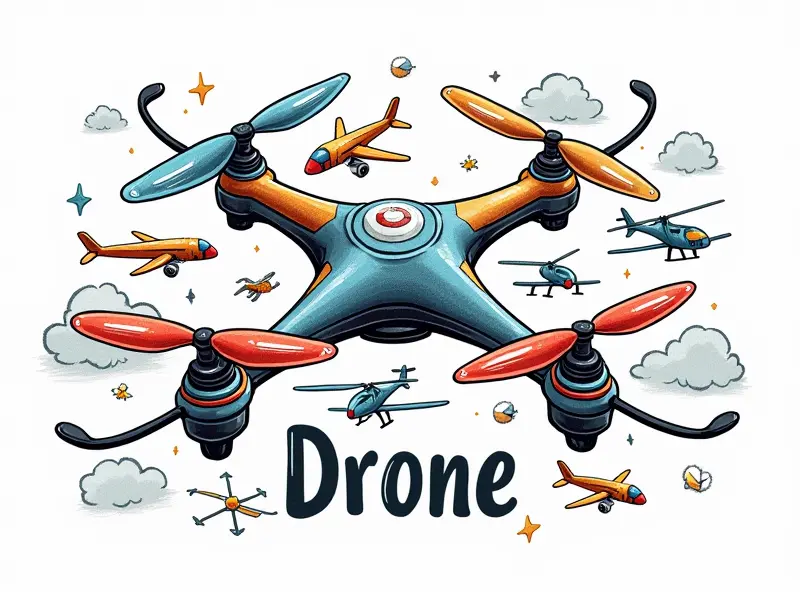How to tune an ESC for FPV?

Optimize Your ESC Settings for FPV Racing
Tuning your Electronic Speed Controller (ESC) is a crucial step in achieving optimal performance for your FPV drone. Properly calibrated ESCs ensure smooth throttle response, improved stability, and extended battery life—essential factors for competitive FPV racing.
Understanding the Basics of ESC Tuning
- Battery Voltage: Ensure your ESC is compatible with the voltage range of your LiPo batteries. Over or under-voltage can damage components and reduce performance.
- Throttle Curve: Adjust the throttle curve to match your flying style, whether you prefer a linear response for precision control or an exponential curve for aggressive maneuvers.
Mastering ESC Tuning for FPV Drones
To master ESC tuning, it's essential to understand how different settings interact with each other. Adjusting the timing and current limits can significantly impact your drone’s performance and durability.
Key Settings to Focus On
- BEC (Battery Eliminator Circuit): Disable if you have a separate power supply for servos or receivers, reducing battery drain.
- Failsafe: Set up failsafe modes to ensure safe landing in case of signal loss. This includes setting the throttle minimum and maximum values during failsafe conditions.
Quick Guide to ESC Calibration for FPV
The calibration process ensures your ESC is functioning correctly and provides accurate feedback. Follow these steps:
- Connect: Connect the ESC to a battery and transmitter, ensuring all connections are secure.
- Initialize: Power up the drone and follow the manufacturer’s instructions for initialization.
- Tune: Access the tuning menu via your transmitter or dedicated software and make necessary adjustments.
Boost Performance with Perfect ESC Tuning
A well-tuned ESC can significantly enhance your drone's performance. Here are some tips to achieve this:
- Adjust Timing: Increasing the timing slightly can improve motor efficiency and power output.
- Leverage Damping: Adjust damping settings to reduce oscillations during high-speed maneuvers, improving stability.
Fine-Tune ESCs for Smoother FPV Control
Smoother control is crucial in competitive racing. Fine-tuning your ESC can help achieve this:
- Smooth Throttle Response: Ensure a smooth throttle response by adjusting the exponential curve to match your flying style.
- Better Propeller Control: Optimize propeller control settings for better lift and thrust, especially during takeoff and landing.
Maximize Battery Life Through ESC Optimization
Efficient power management is key to extending your flight time. Here’s how you can optimize your ESCs for battery conservation:
- Reduce Current Draw: Lower the current limit setting if possible, without compromising motor performance.
- Battery Monitoring: Enable battery voltage monitoring to avoid over-discharging and damaging your LiPo cells.
Essential Tips for ESC Setup in FPV Racing
Setting up your ESCs correctly is crucial for competitive racing. Follow these tips:
- Match Components: Ensure that the ESC, motor, and propeller are compatible to achieve optimal performance.
- Test Throttle Response: Test throttle response in a safe environment before taking your drone out for racing.
Achieve Peak Efficiency: ESC Tuning Secrets
To reach peak efficiency, consider these advanced tuning techniques:
- Balancing Load: Balance the load across multiple ESCs to distribute power evenly and reduce strain on individual components.
- Dynamic Timing Adjustment: Implement dynamic timing adjustment based on flight conditions for maximum efficiency.
Unlock Full Potential of Your ESC Settings
To unlock the full potential of your ESC settings, experiment with different configurations and monitor performance changes. This iterative process can help you find the perfect balance between power output and control stability:
- Vary Parameters: Vary parameters such as timing, current limits, and damping to see how they affect flight characteristics.
- Analyze Flight Data: Use telemetry data to analyze performance metrics and identify areas for improvement.
Perfect ESC Calibration for FPV Performance
To achieve perfect calibration, follow these steps:
- Start with Defaults: Begin by setting the ESCs to factory defaults and gradually adjust settings as needed.
- Test Throttle Curve: Test different throttle curve settings until you find one that suits your flying style best.
Boost Speed and Stability with ESC Tuning
Tuning for speed and stability requires a delicate balance. Here’s how to achieve it:
- Increase Power Output: Increase power output slightly by adjusting timing settings, but be cautious not to overheat the motor.
- Enhance Stability: Enhance stability through damping and filtering adjustments to reduce oscillations during high-speed maneuvers.
Conclusion
Tuning your ESCs for FPV racing is a critical step in achieving optimal performance, control, and efficiency. By following these guidelines and experimenting with different settings, you can unlock the full potential of your drone’s capabilities. Remember to always prioritize safety by testing new configurations in controlled environments before taking them out on the race track.

